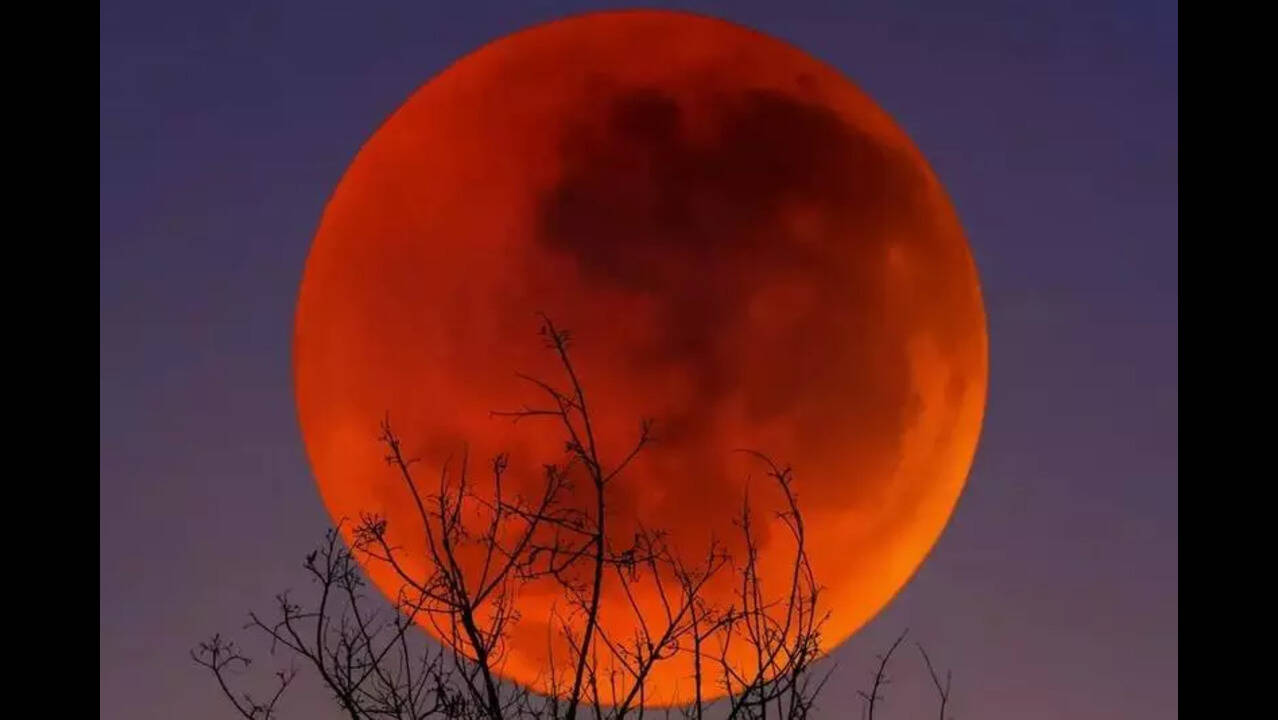
How to See Sunday’s ‘Blood Moon’ Total Lunar Eclipse: A Spectacle You Won’t Want to Miss
This Sunday evening, sky-watchers in the UK are in for an incredible celestial spectacle—the ‘Blood Moon’ total lunar eclipse. As the full Moon passes through Earth’s shadow, it will transform into a deep red hue, creating a stunning visual effect that’s sure to captivate anyone lucky enough to catch it. Here’s everything you need to know about the event, including when and where to see it, what a lunar eclipse is, and how to make the most of this rare occurrence.
What Time Will the Blood Moon Be Visible?
The total lunar eclipse will occur on Sunday, with the full eclipse beginning at 18:30 and ending at 19:52. However, in the UK, the Moon will not be visible until it rises above the horizon, so the exact viewing time depends on your location.
- Easternmost parts of the UK, like Norwich, will see the Moon rise at around 19:25, giving them a longer opportunity to witness the full eclipse.
- In contrast, western regions such as Wales and Cornwall will only catch a brief glimpse, with the moonrise occurring just a minute or two before the total eclipse ends.
- Northern Ireland and western Scotland will miss the totality of the eclipse but may still catch some of the Earth’s shadow as it crosses the Moon.
How to Watch the Eclipse: The Best Viewing Tips
To get the best view of the eclipse, make sure you’re in a location with a clear, unobstructed view of the horizon. If you’re in a city, a hill or popular viewpoint could be your best bet. As the Moon rises, it will gradually pass through the phases of the eclipse, with the full red “Blood Moon” effect appearing once the Moon is entirely within Earth’s shadow.
Binoculars or a telescope will improve the viewing experience, but unlike solar eclipses, lunar eclipses are safe to watch directly with the naked eye. The Moon’s reflected light is not bright enough to cause any harm to your eyes, making it an ideal spectacle for amateur astronomers and casual sky-gazers alike.
Cloud cover can affect visibility, so check your local weather forecast ahead of time. However, with improved forecasts over recent days, many areas are expected to have clear skies by the evening.
What Exactly is a Lunar Eclipse and Why Is It Called a ‘Blood Moon’?
A lunar eclipse occurs when the Earth comes between the Sun and the Moon, casting a shadow across the Moon’s surface. In a total lunar eclipse, the Moon is completely engulfed by Earth’s shadow, often taking on a deep red hue. This phenomenon is due to a process called Rayleigh scattering, where shorter blue wavelengths of light are scattered, and longer red wavelengths remain visible. This effect is the same process that causes our sunsets to appear red and our skies to look blue.
As the Moon passes through the various stages of the eclipse, you’ll witness three phases:
- Penumbral Lunar Eclipse: The Moon enters Earth’s outer shadow, causing a subtle dimming of its light.
- Partial Lunar Eclipse: A portion of the Moon enters Earth’s shadow, creating a dark segment on the surface.
- Total Lunar Eclipse: The Moon is fully within Earth’s shadow, giving it the iconic red color that gives the event its “Blood Moon” name.
The entire eclipse cycle on Sunday begins at 16:28, with the penumbral eclipse, and ends at 21:55 when the post-totality penumbral eclipse concludes. The maximum eclipse, where the Moon is fully immersed in Earth’s shadow, will occur at 19:11.
Why Does the Moon Turn Red During a Blood Moon?
The reddish appearance of the Moon during a total lunar eclipse has been both awe-inspiring and alarming to people throughout history. Many cultures viewed the Blood Moon as a bad omen, but it’s actually a natural phenomenon caused by the way light passes through Earth’s atmosphere. Dr. Edward Bloomer, an astronomer at the Royal Observatory Greenwich, explained, “It’s just the refraction of light through Earth’s atmosphere—the same effect that gives us red sunsets.”
It’s as if every sunrise and sunset on Earth is being cast upon the lunar surface, creating a unique visual effect that’s been observed and marveled at by sky-watchers for centuries.
When Is the Next Lunar Eclipse Visible in the UK?
If you’re unable to catch Sunday’s eclipse, don’t worry—there will be other opportunities. The next total lunar eclipse visible in the UK will occur on 28 August 2026. Mark your calendars for another chance to witness this stunning natural event!
Will the Weather Cooperate for Viewing?
For those in the UK hoping for clear skies to witness the eclipse, the weather has improved significantly over the last few days. Initially, it seemed like cloud cover and rain would obscure the view, but forecasts suggest that many areas will have clear skies by the evening, with high pressure moving east and bringing drier conditions.
However, there could still be some showers, especially in the North West, so it’s wise to keep an eye on the weather forecast for your specific area before the event.
In Summary: Why You Shouldn’t Miss the Blood Moon
A total lunar eclipse is a breathtaking event, and Sunday’s Blood Moon is no exception. Whether you’re a seasoned sky-watcher or simply someone looking to experience a rare celestial phenomenon, this event promises to be a memorable spectacle. The deep red hue of the Moon, caused by Earth’s shadow, is a sight that’s both scientifically fascinating and visually stunning.
So, grab your binoculars, check your local weather, and head to a vantage point with a clear view of the horizon. Sunday night, the Blood Moon is waiting to light up the sky, offering a rare opportunity to witness the wonders of our solar system in action.
Don’t miss out—the next total lunar eclipse visible in the UK won’t come until 2026!
Popular Categories





